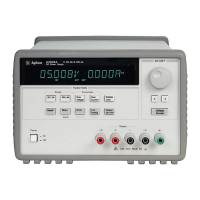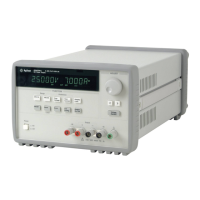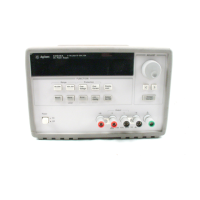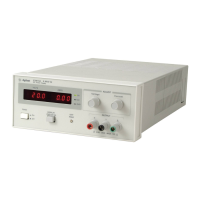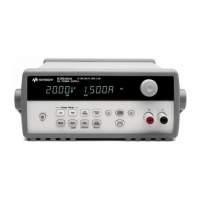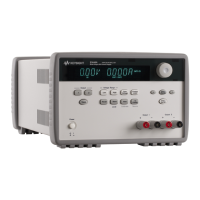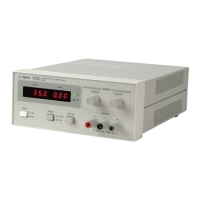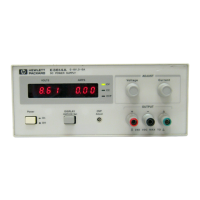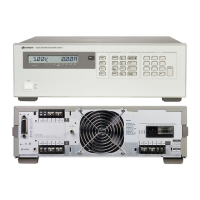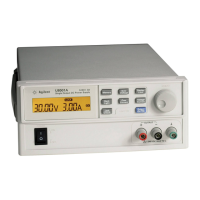Chapter 4 Remote Interface Reference
The SCPI Status Registers
94
To determine the operating mode (CV or CC) for the power supply send
STAT:QUES:INST:ISUM<n>:COND?, where n is 1, 2, or 3 depending on the
output. Bit 1 true indicates the output is in constant voltage mode, bit 0 true indicates
constant current mode, both bits true indicates neither the voltage nor the current is
regulated, and both bits false indicates the outputs of the power supply are off.
The Questionable Status Event register is cleared when:
• You execute the *CLS (clear status) command.
• You query the event register using STATus:QUEStionable[:EVENt]?
(Status Questionable Event register) command.
For example, 16 is returned when you have queried the status of the questionable
event register, the FAN condition is questionable.
The Questionable Status Enable register is cleared when:
• You execute STATus:QUEStionable:ENABle 0 command.
For example, you must send the STAT:QUES:ENAB 16 to enable the FAN bit.
